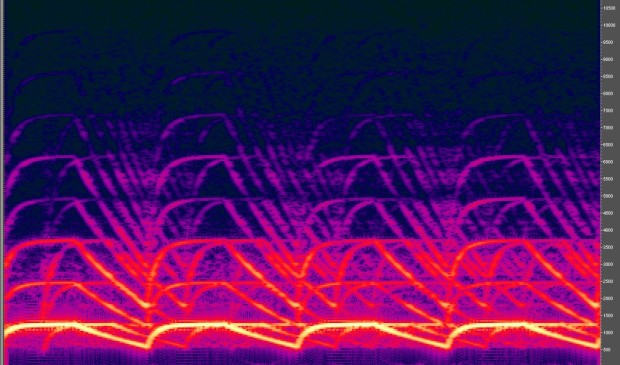Body cameras roll through Public Safety Committee
Tuesday, April 28, 2015 by
Caleb Pritchard The long march to add body cameras to Austin Police Department’s official toolkit took a symbolic step forward Monday night when members of the City Council’s Public Safety Committee heard unanimous support from a diverse group of stakeholders.
It was a rare moment of harmonic accord for APD, the Office of the Police Monitor, the local chapters of the NAACP and ACLU, and outspoken activist Antonio Buehler.
Furthermore, all four committee members on the dais — Ora Houston, Leslie Pool, Chair Don Zimmerman and Vice Chair Greg Casar — signaled their support for the program.
None of the principals disagreed over the importance of deploying body cameras to record officers’ encounters with the public. High-profile deaths of young black men at the hands of police officers nationwide has sparked an unprecedented interest in the technology that could shine light on situations often obscured by conflicting accounts between officers, suspects, victims and witnesses.
Assistant Chief Jason Dusterhoft opened Monday’s briefing with an update on the department’s initial research into the devices. In November, APD posted a formal request for information to solicit details related to “capturing video and audio, data storage, usability features, security features, environmental durability, battery, connectivity, accessories, warranties, implementation, and any other additional features available.”
Dusterhoft said the department is currently reviewing and evaluating formal replies from 17 different vendors. He explained that the next step would involve developing a proposal for purchase, which he said could take up to two months. Subsequent reviews, testing and ultimate deployment could then take as long as two-and-a-half years after that, Dusterhoft said.
“This is a soft timeline,” he told the committee. “Now, if Council comes back and says, ‘We need this done immediately,’ obviously we’re going to work as quickly as we can. Our only concern is that we want to do it right. We don’t want to do something hasty and then not have it work to the standards that we like.”
Dusterhoft predicted that the ultimate cost of the program over five years could land near $7 million. Nearly half of that would go toward the infrastructure needed to store the huge amounts of digital video data.
He mentioned pending bills in the Texas Legislature, including SB 158, which would provide state money to help local law enforcement agencies cover the cost of body cameras. However, he also cautioned that the city should not hang all its hopes on the state, a notion seconded by Police Monitor Margot Frasier.
“For one thing, don’t rely on the Legislature to fund these things,” Frasier told the committee before citing a previous pledge from lawmakers to pay for local agencies’ dashboard cameras. The bulk of that money, Frasier said, ended up going to Department of Public Safety vehicles.
Frasier went on to explain the importance of deploying body cameras as a means of adding “incredible transparency” to police operations. Like Dusterhoft, she stressed the importance of putting in place an effective policy for the cameras before the program starts. However, she also struck one note of disagreement with APD.
“I get a little scared when I hear the timeline that’s being laid out by the Austin Police Department,” Frasier said. “I don’t think this needs to be a two-year process.”
Subsequent speakers echoed that sentiment, including American Civil Liberties Union -Texas volunteer Debbie Russell, local NAACP chapter president Nelson Linder, and Buehler, the activist acquitted in a high-profile case stemming from his recording a 2012 encounter with Austin police.
Russell delivered a presentation that outlined the unusual common ground the ACLU-TX shares on body cameras with the Police Executive Research FirmForum, a law enforcement advocacy group not necessarily inclined to break bread with civil liberties groups.
Linder also knocked APD’s timeline and noted the high stakes in play.
“The reality is we are talking about lives,” he said. “Folks have lost their lives. There have been some very bad practices.”
Linder added that the cameras are an excellent tool, but he told the committee it would not be a silver bullet.
“Bottom line is, until you treat people like human beings and hold officers accountable, no technology is gonna stop this problem. It’s gonna help us see things,” Linder said. “I love that. But I’d much rather have police officers treat people as human beings so we don’t have to have this conversation. Because once someone is hurt and killed, we can’t bring them back.”
Casar agreed with Linder and suggested that the body cameras will be only one tool in the city’s toolbox. He mentioned that Council could also focus on other programs, including economic opportunity initiatives.
“No one thinks this is going to be a panacea,” Casar said.
Buehler unsurprisingly offered his ringing endorsement of the technology, but also urged several key restrictions in order to preserve the integrity of any evidence recorded by the body cameras. He told the committee that APD has a culture in place that is hostile to recorded encounters and warned of possible tampering.
Buehler implored Council members to include a rule that would require officers to write all police reports before viewing body camera video. He also called for strict punishments for officers who turn off their cameras during encounters, including automatic dismissal for incidents that involve the use of force.
When Zimmerman asked Buehler if he thought APD could deploy body cameras within a year, Buehler did not hesitate to respond.
“I definitely believe it’s doable. The technology is there,” he said. “And I want it to happen. The quicker, the better. But we have to have safeguards and protections to ensure the police don’t treat this like dash cams, or they don’t treat it like people filming in the streets.”
“Sirenspectrogram” by Original uploader was Key45 at en.wikipedia – Transferred from en.wikipedia; transferred to Commons by User:IngerAlHaosului using CommonsHelper. Licensed under CC SA 1.0 via Wikimedia Commons.
You're a community leader
And we’re honored you look to us for serious, in-depth news. You know a strong community needs local and dedicated watchdog reporting. We’re here for you and that won’t change. Now will you take the powerful next step and support our nonprofit news organization?











